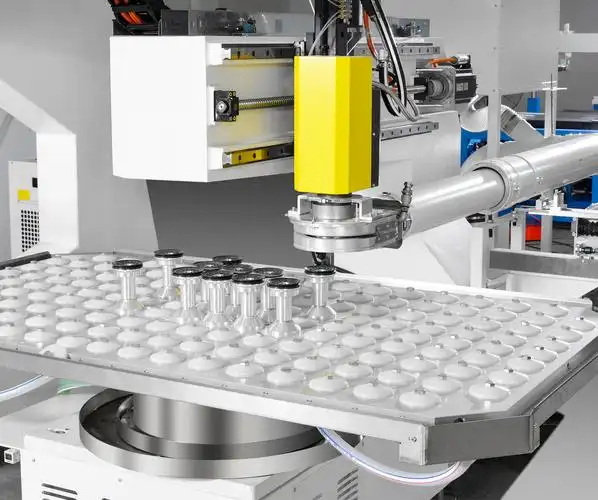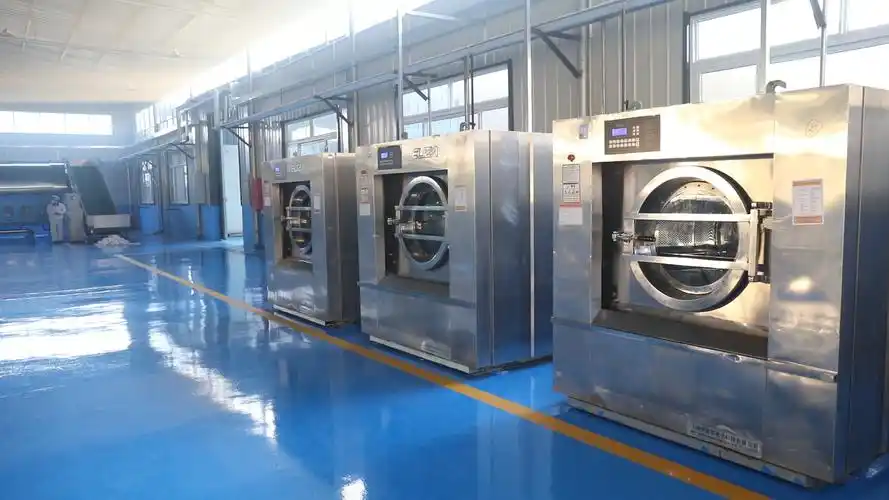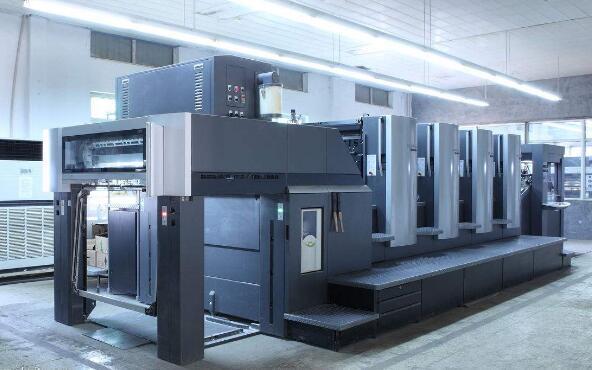
Printing and packaging industry
Providing solutions for industrial equipment power
Printing and packaging industry
Summary
The application of special motors in the printing and packaging industry runs through the entire process, including printing, die-cutting, slitting, laminating, and box gluing. Their performance directly affects equipment precision, production efficiency, and stability. The following explains this from the aspects of Application Scenarios 、 Motor Types 、 Key Requirements and Technological Trends etc.:
I. Main Application Scenarios and Motor Types
The printing and packaging industry covers equipment such as single-sheet printing presses, roll-fed printing presses, die-cutting machines, slitting machines, laminating machines, and box gluing machines. The demand for motors varies significantly in different processes:
1. Printing Process (Single-sheet / Roll-fed Printing Press)
- Application Scenarios : Printing units, paper feeding units, and paper receiving units of offset presses, flexographic presses, and gravure presses.
- Motor Types :
- Servo motor :
- Printing unit : Drives the printing plate roller and rubber roller, requiring speed accuracy ≤ ±0.01%, cooperating with the encoder to achieve multi-motor synchronous control (phase error ≤ 0.1°), ensuring register accuracy (e.g., register error < 0.1mm for label printing).
- Paper feeding / receiving unit : Controls the paper feeding speed (50-150 sheets/minute), requires quick start/stop response (acceleration time < 0.5 seconds), and avoids paper skew.
- Direct-drive permanent magnet synchronous motor (PMSM) : Used in high-speed roll-fed printing presses (speed > 800 meters/minute), directly drives the roll shaft, reduces transmission chain clearance, and improves tension control accuracy.
- Servo motor :
- Key Requirements :
- High dynamic response : During printing, the speed needs to be adjusted in real-time to compensate for paper tension fluctuations (e.g., when tension changes ±5N, speed fluctuation < ±0.5%).
- Low vibration and noise : Motor vibration value ≤ 1.8mm/s (ISO 1940 G2.5 grade), noise ≤ 75dB, avoiding affecting printing quality (e.g., dot offset).
2. Die-cutting and Slitting Process
- Application Scenarios : Die-cutting machines (stamping), slitting machines (slitting roll materials), and cross-cutting machines (fixed-length cutting).
- Motor Types :
- Servo motor + reducer :
- Die-cutting machine : Drives the crankshaft or cam mechanism, requiring positioning accuracy ≤ ±0.02mm, and repeat positioning error < 0.01mm (e.g., the accuracy of irregularly shaped holes in trademark die-cutting).
- Slitting machine : Controls unwinding/rewinding tension (tension control accuracy ±1%), and achieves constant tension control with a swing roller sensor.
- Torque motor : Used in the unwinding unit of the slitting machine, automatically adjusts the speed through load torque feedback to avoid material stretching and deformation (e.g., tension ≤ 5N when slitting film).
- Servo motor + reducer :
- Key Requirements :
- Rigidity and impact resistance : During die-cutting, the motor needs to withstand instantaneous impact loads (peak torque reaches 3-5 times the rated torque), and the gearbox needs to use high-strength alloy materials (e.g., 20CrMnTi carburizing and quenching).
- Synchronous control accuracy : When slitting multiple shafts, the speed synchronization error of each motor is < ±0.05%, ensuring neat edges (e.g., carton slitting size error < 1mm).
3. Laminating and Box Gluing Process
- Application Scenarios : Laminating machines (paper and film composite) and box gluing machines (carton forming and bonding).
- Motor Types :
- Variable frequency motor : Drives the laminating roller or box gluing conveyor belt, with a speed range of 1:10 (e.g., laminating speed 5-50 meters/minute), and cooperates with the PLC to achieve temperature-speed linkage control (e.g., automatically reduces speed when the glue roller temperature reaches 120℃).
- Stepper motor : Used in low-power actuators of box gluing machines (e.g., carton folding claws, glue coating heads), with positioning accuracy of ±0.05mm, suitable for short-distance quick start/stop.
- Key Requirements :
- Temperature adaptability : The temperature near the heating roller of the laminating machine can reach 150℃, and the motor needs to use F-class insulation (temperature resistance 155℃), and winding temperature rise ≤ 75K.
- Anti-adhesive design : The surface of the box gluing machine motor needs to be smooth and without dead corners to avoid glue adhesion affecting heat dissipation (e.g., mirror polishing of the shell).
II. Core Requirements of the Industry for Special Motors
1. High-precision Synchronization and Control
- Register accuracy requirements : High-end packaging printing (such as medicine packaging boxes) requires register error < 0.05mm between color groups, and multiple servo motors need to be used through E-Axle technology to achieve phase synchronization (communication cycle ≤ 1ms).
- Case : A certain label printing factory uses an 8-axis servo system to drive a satellite-type flexographic printing press, improving the register accuracy from ±0.15mm to ±0.03mm, and reducing the defect rate by 60%.
2. Energy Efficiency and Energy-saving Design
- Policy requirements : EU CE certification requires the energy efficiency of printing equipment motors to reach IE3 level, and some high-end equipment has adopted IE4 level permanent magnet motors (efficiency > 95%).
- Energy-saving scenarios :
- When the roll paper printing machine is not operating at full load, the servo motor vector control automatically reduces the excitation current, saving 15%-25% energy compared to traditional asynchronous motors.
- After a certain paper box factory replaced the slitting machine motor with a permanent magnet synchronous motor, the annual power consumption decreased from 80,000 kWh to 56,000 kWh, saving about 21,000 yuan (calculated at 0.75 yuan/kWh).
3. Reliability and long lifespan
- Continuous operation requirements :The printing production line operates 16-24 hours per day, and the motor needs to adapt to high-load operating conditions (such as bearing life ≥50,000 hours, using SKF double-row angular contact ball bearings).
- Maintenance convenience :
- Modular design: The motor and driver are integrated (such as servo integrated machine), reducing wiring fault points.
- Maintenance-free characteristics: Using long-lasting lubricating grease (such as KLUBER NBU 15, lifespan 80,000 hours), reducing the frequency of downtime maintenance.
4. Environmental adaptability and protection
- Dust and oil environment :Paper dust and ink mist are easily generated during printing, and the motor protection level needs to reach IP54 (such as slitting machine motor) or IP65 (such as offset printing machine wetting unit motor).
- Moisture-proof design :In humid southern regions, motor heaters (such as 30W constant temperature heating belts) should be installed to prevent winding condensation and short circuits.
III. Typical motor technology and application cases
1. Electronic shaft servo system
- Technical advantages :Replacing traditional mechanical gear transmission, using digital bus (such as EtherCAT) to achieve multi-motor synchronization, response speed <1ms, suitable for high-speed printing machines (vehicle speed >1000 meters/minute).
- Case :The Heidelberg Speedmaster CX 102 offset printing machine uses the Siemens SIMOTION servo system, shortening the plate changing time from 30 minutes to 8 minutes, and improving production efficiency by 70%.
2. Direct drive torque motor
- Application Scenarios :High-speed slitting machine, rewinding machine unwinding unit, directly driving the roll shaft, eliminating the need for gearboxes and clutches.
- Advantages :Tension control accuracy ±0.5%, starting torque reaches 300% of the rated torque, suitable for easily stretchable materials such as thin films and aluminum foil (such as lithium battery aluminum-plastic film slitting).
3. Explosion-proof motor (special scenarios)
- Application Scenarios :Printing solvent-based inks or handling flammable and explosive packaging materials (such as printing wine packaging boxes).
- Technical requirements :Complies with the Ex IIB T4 explosion-proof standard, motor surface temperature ≤135℃, junction box adopts explosion-proof design, avoiding electric sparks igniting volatile gases.
IV. Future technology trends
- Popularization of ultra-precision servo motors :Combination of nano-level encoders (resolution >23 bits) and direct drive technology, pushing the register accuracy to ±0.01mm, meeting the high-end printing needs of microelectronic labels, optical films, etc.
- Low-carbonization and energy recovery :
- Braking energy feedback technology: When the printing machine decelerates, kinetic energy is converted into electrical energy and stored in a capacitor or fed back to the power grid, saving 8%-12% energy.
- Lightweight motor materials: Using carbon fiber rotors and ultra-thin stacking of silicon steel sheets (thickness <0.2mm), reducing rotational inertia and improving response speed.
- Intelligent and predictive maintenance :
- AI chips built into the motor, real-time analysis of vibration, temperature, and current data, predicting bearing wear, winding aging and other faults (such as prediction accuracy >90%).
- Digital twin technology simulates the load curve of the motor under different printing processes, optimizes acceleration and deceleration parameters, and reduces material waste (such as reducing the waste rate of test printing by 50%).
- Contactless transmission technology :Such as magnetic levitation motors, air bearing motors, eliminating mechanical contact wear, suitable for ultra-high-speed printing (vehicle speed >1500 meters/minute) and aseptic packaging production lines.
Summary
The core needs of the printing and packaging industry for special motors are High precision, high response, high reliability In the future, development will focus on precision control, green energy saving, and intelligent operation and maintenance. When selecting motors, it is necessary to combine printing processes (such as offset printing, flexographic printing), material characteristics (such as thin films, cardboard), and production capacity targets, and prioritize the synchronous performance of the servo system, motor protection level, and energy efficiency level to meet the dual requirements of quality and efficiency in the high-end packaging market.








